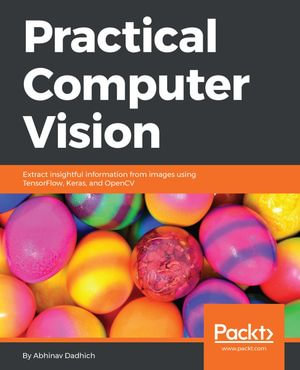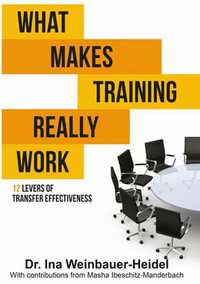
eTEXT
Practical Computer Vision
Extract insightful information from images using TensorFlow, Keras, and OpenCV
By: Abhinav Dadhich
eText | 5 February 2018 | Edition Number 1
At a Glance
eText
$47.29
OR
Free with Kobo Plus Read
Start Free Trial *- Subscribe and read all you want.
- $13.99 a month after free trial. Cancel Anytime. Learn more.
Instant online reading in your Booktopia eTextbook Library *
Read online on
Not downloadable to your eReader or an app
Why choose an eTextbook?
Instant Access *
Purchase and read your book immediately
Read Aloud
Listen and follow along as Bookshelf reads to you
Study Tools
Built-in study tools like highlights and more
* eTextbooks are not downloadable to your eReader or an app and can be accessed via web browsers only. You must be connected to the internet and have no technical issues with your device or browser that could prevent the eTextbook from operating.
A practical guide designed to get you from basics to current state of art in computer vision systems.
About This Book
- Master the different tasks associated with Computer Vision and develop your own Computer Vision applications with ease
- Leverage the power of Python, Tensorflow, Keras, and OpenCV to perform image processing, object detection, feature detection and more
- With real-world datasets and fully functional code, this book is your one-stop guide to understanding Computer Vision
Who This Book Is For
This book is for machine learning practitioners and deep learning enthusiasts who want to understand and implement various tasks associated with Computer Vision and image processing in the most practical manner possible. Some programming experience would be beneficial while knowing Python would be an added bonus.
What You Will Learn
- Learn the basics of image manipulation with OpenCV
- Implement and visualize image filters such as smoothing, dilation, histogram equalization, and more
- Set up various libraries and platforms, such as OpenCV, Keras, and Tensorflow, in order to start using computer vision, along with appropriate datasets for each chapter, such as MSCOCO, MOT, and Fashion-MNIST
- Understand image transformation and downsampling with practical implementations.
- Explore neural networks for computer vision and convolutional neural networks using Keras
- Understand working on deep-learning-based object detection such as Faster-R-CNN, SSD, and more
- Explore deep-learning-based object tracking in action
- Understand Visual SLAM techniques such as ORB-SLAM
In Detail
In this book, you will find several recently proposed methods in various domains of computer vision. You will start by setting up the proper Python environment to work on practical applications. This includes setting up libraries such as OpenCV, TensorFlow, and Keras using Anaconda. Using these libraries, you'll start to understand the concepts of image transformation and filtering. You will find a detailed explanation of feature detectors such as FAST and ORB; you'll use them to find similar-looking objects.
With an introduction to convolutional neural nets, you will learn how to build a deep neural net using Keras and how to use it to classify the Fashion-MNIST dataset. With regard to object detection, you will learn the implementation of a simple face detector as well as the workings of complex deep-learning-based object detectors such as Faster R-CNN and SSD using TensorFlow. You'll get started with semantic segmentation using FCN models and track objects with Deep SORT. Not only this, you will also use Visual SLAM techniques such as ORB-SLAM on a standard dataset.
By the end of this book, you will have a firm understanding of the different computer vision techniques and how to apply them in your applications.
Style and approach
Step-by-step guide filled with real-world, practical examples for understanding and applying various Computer Vision techniques
Read online on
ISBN: 9781788294768
ISBN-10: 1788294769
Published: 5th February 2018
Format: ePUB
Language: English
Publisher: Packt Publishing
Edition Number: 1
You Can Find This eBook In
This product is categorised by
- Non-FictionComputing & I.T.Computer ScienceArtificial IntelligenceComputer Vision
- Non-FictionComputing & I.T.Graphical & Digital Media Applications3D Graphics & Modelling
- Non-FictionComputing & I.T.DatabasesData Capture & Analysis
- Non-FictionComputing & I.T.DatabasesDatabase Design & Theory
- Non-FictionComputing & I.T.Computer ScienceArtificial IntelligencePattern Recognition
- Non-FictionComputing & I.T.Computer ScienceHuman-Computer InteractionInformation Architecture
- Non-FictionComputing & I.T.Computer ScienceComputer Architecture & Logic Design























